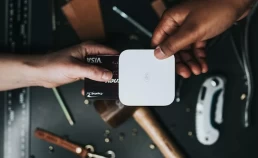It’s inherent for us humans to spend for our needs. However, we’re also prone to messing up our budget.
Nonetheless, there’s no need to beat yourself up whenever you shell out money more than you intend to. Overspending is an issue, but it’s something you can work around.
Admitting you have spending problems is the first step get your budget under control. Easier said than done, right?
Keep in mind, though, that overspending is a learned behavior. It can be due to how you were brought up as a kid, lifestyle inflation, or emotional issues.
Nonetheless, there are concrete ways to curb overspending.
Table of Contents
Toggle1. Study Your Cashflow
According to a registered financial planner, Fitz Villafuerte: “Cashflow is, and will always be, the foundation of all financial plans.”
One way to curb your overspending issue is to know how much you are earning and spending every month.
Track your expenses for at least three paydays. That way you can easily pinpoint your wants and needs. You can even categorize them further into following:
- Fixed expenses such as monthly rent and internet subscription.
- Fluctuating expenses such as electric or water bill (because your monthly bill changes depending on your consumption and other factors).
- Avoidable expenses like riding a taxi on your way to office when you can ride the MRT.
- Frivolous expenses like that very expensive shoes you bought but never used.
Related: 6 Warning Signs That You’re an Overspender
2. Start a Spending Plan
Based on your computation, the next step is to create a spending plan.
Yes, spending plan.
While having a budget is integral in getting your finances under control, financial psychologist, Dr. Bradley Klontz, asserts that budgeting connotes deprivation. It’s like going on a diet.
“Your emotional brain responds to the word ‘budget’ the same way it responds to the word ‘diet.’ The connotation is deprivation, suffering, agony, depression.”
Budget makes you think of what you can’t have instead of what you want. Thus, it’s better to develop a spending plan rather than a budget.
Fitz Villafuerte shared a simple spending plan to help you get started.
3. Practice Zero-Based Budget Planning
Most spendthrifts think that they can spend whatever they have. This is where zero-based budgeting (ZBB) could come in handy.
According to Dave Ramsey, the point of ZBB is to make sure that every dollar (in our case, every peso) has somewhere to go. Meaning, if you have PHP 500 left in your money while working on your spending plan, you’re not yet done.
Either you redo your spending plan or put that remaining amount on your personal savings, add it to your emergency fund, or use it to pay your debt.
The end goal is to zero out your paycheck. Otherwise, you’ll be triggered to overspend.
4. Pay Yourself First
According to J. D. Roth, paying yourself first means setting aside a part of your income before paying your bills, buying your groceries, and spending on anything else.
The rationale here is to make sure that your future financial goals are covered before you make discretionary expenses. In fact, it’s the easiest and simplest way to save money.
Usually, finance gurus suggest that you save 10% of your monthly salary. If it seems a lot, Fitz Villafuerte suggests trying a smaller amount. However, you have to make changes on how you spend your money so you can increase the amount that you can save.
Considering you’re able to save a lot by the end of the year, what are you supposed to do with it?
For one, you can use it to pay off your debts. You can use it to build your emergency or retirement fund. You can put it in a bank account meant for buying a house or a car. Even better, invest your money and see it grow.
Paying yourself first, when it becomes a habit, can help set you free from your money problems.
5. Use Cash Instead of Credit Card
In a 2010 research conducted by Manoj Thomas and colleague, using credit card weakens the pain of paying.
“The pain of paying in cash can curb impulsive urges to purchase such unhealthy food products. Credit card payments, in contrast, are relatively painless and weaken impulse control.”
The result: You develop “credit card premium” mentality.
While going cash-only isn’t always convenient, it forces you to manage the way you handle your money. That’s because you have nothing to fall back on other than what you have in your pocket. Plus, you won’t incur consumer debt (debt used to fund consumption rather than investment).
So, it’s better to use cash to curb the urges of spending.
6. Create a Sinking Fund
Sinking Fund was first used in 18th century Great Britain to reduce the national debt. According to Bangko Sentral ng Pilipinas, it is “a fund set aside in order to accumulate the amount necessary for the redemption of redeemable preferred shares.”
So, how can you start one? Chris Peach of Money Peach advises that you open a savings account that is separate from your emergency fund. Set aside a little money each month, and prepare to see how quickly it adds up.
Also, you can start building sinking funds for the following:
- Vacation fund
- New car or car repair fund
- Christmas or birthday gifts fund
- Home repair or new appliance fund
- Medical care fund
If you’re not into opening multiple bank accounts, you can check with your local bank if they offer sinking fund services.
7. Share Your Financial Goals with Your Squad
Although the impact may not be recognizable at first, overspending can hinder your financial goals.
One of the best ways to check how you handle your money is to share your financial goals with your friends and family. It can be paying off your debt, building an emergency fund, or funding your retirement early on.
But don’t just tell your friends about your monetary intentions. Tap them to make you accountable. Better yet, encourage them to have a financial goal as well!
As Thomas S. Monson puts it:
“When performance is measured, performance improves. When performance is measured and reported, the rate of improvement accelerates.”
8. Seek Professional Help
Let’s face it, finding ways to fix your overspending problems is a difficult feat. But certified financial planner Kelly Trageser asserts that “recognizing you may need professional money help is the first step in the right direction towards better financial health.”
Planning how you can pay off your debts, as well as how to get back on track, can be overwhelming. Thus, you might need the help of a financial planner. After all, the process of financial planning is not a one-size-fits-all package.
The Registered Financial Planner Philippines is a great place to find that professional money help you need.
9. Reward Yourself
Just like when going on a strict diet, putting yourself on a strict budget can make you go nuts and splurging when the right temptation comes along.
Rewarding yourself can help you stay on track. It could be as simple as putting a little cash aside from your monthly salary to buy that signature bag you’ve always wanted. If you’re foody, allot a monthly budget so you can go fine dining once a month.
After all, the reason you’re on a budget is to make sure you have enough funds to do what you love.
Over to You
Admitting you have money issues can help you fix your overspending problems.
Acknowledge that you need to change the way you handle your money. And then think of what would happen if you let yourself drown in debt. It makes you shiver, right?
Related: 5 Consequences of Overspending
What if you’re able to get past it? Imagine the peace of mind that comes with financial stability.
So, find someone who can make you accountable for your spending habits. When you focus on your goals, pay yourself first, and stick with your spending plan, you’ll be debt-free in no time.
Faith Dayrit is Cash Mart’s resident writer specializing in personal finance. She also has the tendency to dip her toes in digital marketing and mompreneurship.





